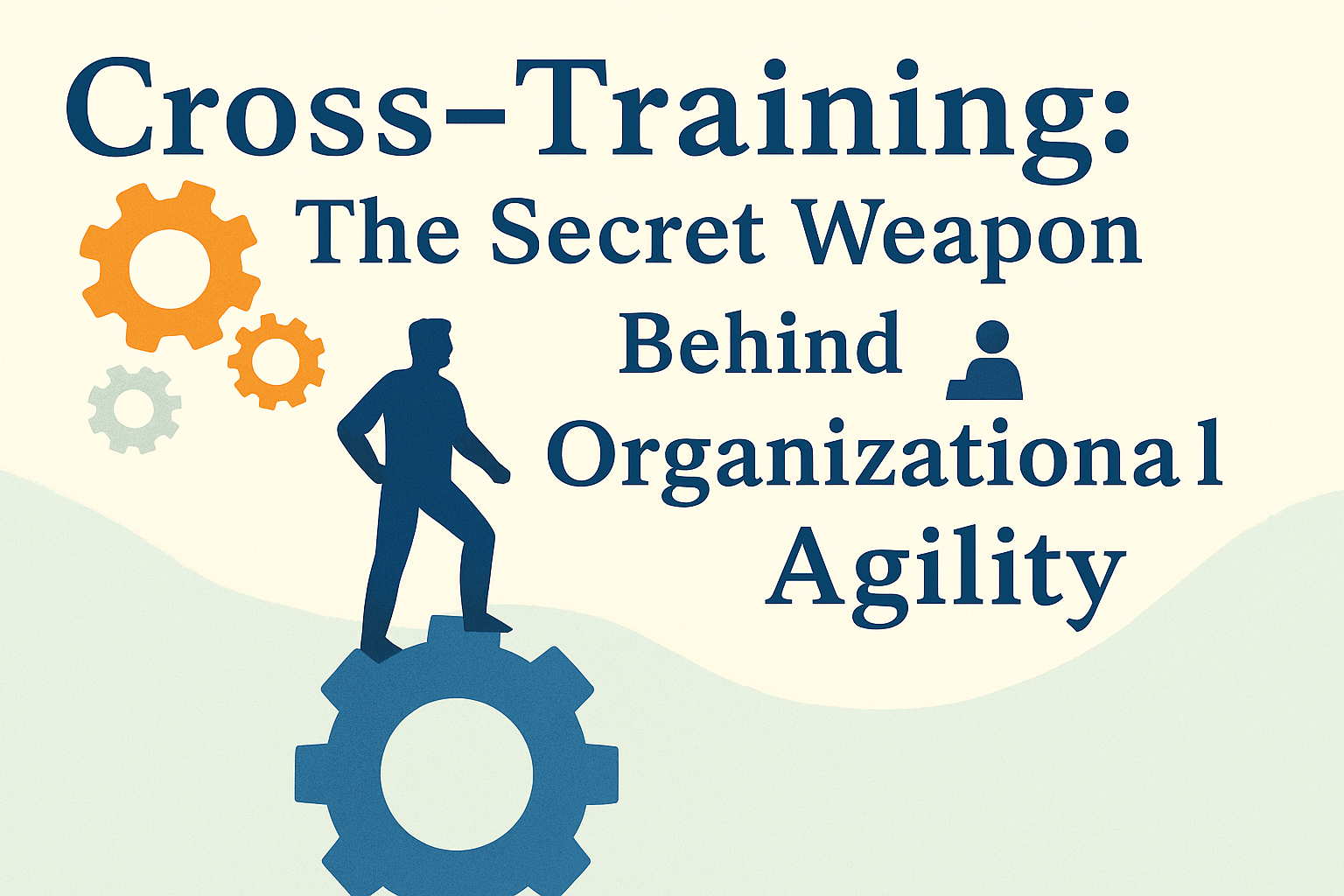It is often said that business is only as good as the people who support it. At LatitudeLearning, we know that a solid foundation in training is the key to ensuring success in your business.
While many training programs aim to provide a one-and-done approach to competency and skill development, we understand that it’s not always that simple. When you are operating on the level of an extended enterprise, your training program needs to be able to perform at that same scale.
Developing the Skills of Your Enterprise
From the perspective of OEMs and other extended enterprises, developing the skills of their network is a process that must be approached differently. With multiple partners spread out all over the world and employing thousands of people who will require training, there are many elements that need to be considered when designing a training program and developing the skills that will be required for your network.
By following these steps, you can ensure that your training program is adjusted to provide skill development for the scale of your enterprise.
1) Identify the Different Roles in Your Network
When developing training for a broad range of roles and responsibilities in your enterprise, you must define the different areas that the training program will need to speak to.
The learning objectives and materials created for a salesperson will differ from that of a service technician, and there will be varying levels of competency in both. Depending upon location or specialty, specific tools or materials may vary as well. These are important factors when considering the development of the skills in your network.
When focusing on required skills across the scale of an extended enterprise, it is important to consider the nuances of different roles in different areas.
2) Assessing Skill Gaps
To effectively develop the skills that have been defined in your network, you must understand the current level of knowledge possessed by your network members. By utilizing assessments, surveys, or other evaluation methods, you will have a better understanding of where there might be gaps in their understanding.
With these gaps appropriately identified, training materials can be developed to alleviate them. This strategy allows you to create and deploy the training that the partners in your network need the most.
3) Design the Training Program for Scale
Your training program should be designed to meet the current needs of your members and to fill in any gaps between their current level of knowledge and the level of knowledge needed to perform their job responsibilities appropriately.
The training program should provide each user with clear learning objectives, instructional materials, skills-based training, and assessment methods. These components should be unique to the end user’s role and their development within your enterprise. Keep in mind that these components may vary among similar roles in different locations for your network.
A salesperson at a dealership that sells snowmobiles may require different training modules than a salesperson at a dealership that sells motorcycles.
4) Effectively Deliver the Training Program Across Your Network
When considering the scale of your extended enterprise, you must select a delivery method for your training that can deploy the multiple roles and variations among them effectively throughout your network.
There are many modes of delivering a training program at this type of scale. Online courses, in-person workshops, on-the-job training, or mentorship programs are effective tools for ensuring that your training is seamlessly delivered throughout your enterprise.
5) Evaluate the Effectiveness of the Training
It’s important to regularly assess the effectiveness of the training program. This will help you ensure that the program is meeting its predefined objectives. Gain insight with participant feedback, learning assessments, and impact on key performance indicators (KPIs).
By compiling data obtained from these metrics, you can assess whether or not your training program is effectively developing the skills within your network.
6) Continuously Improve the Skill Development in Your Program
Developing skills at scale is an ongoing process. It’s essential to evaluate and improve the training program to incorporate feedback from network participants. It is also important to stay up-to-date with industry trends and certifications, as they are constantly being adjusted.
Skills evolve, and what it means to be skilled today will change tomorrow. New products are added, or new technology is released, requiring a change in what it means to be “skilled.” Actively managing this change, and evolving with it, will ensure your enterprise employees are always prepared for the future.
Your training materials must always be relevant to your network members. By maintaining focus on continuously developing the skills in your network, you will always be ready to adapt your program to meet the evolving needs of your workforce.
How Can OEMs Develop Skills Across the Enterprise?
For OEMs, developing skills at the enterprise scale involves providing performance-based training across your network. Here are some examples of what it may look like for a training manager at an OEM to develop skills at the enterprise scale:
Implementing standardized training programs
OEMs may develop standardized training programs that focus on the various roles that make up their network. Even with a standardized program, you can still cover a wide range of topics for each position. Within each role, the program could include technical skills, safety protocols, customer service procedures, and leadership development materials that are relevant to that position.
Leveraging technology
Using technology to deliver training programs can be helpful for OEMs who work with partners in different areas of the country or even different parts of the world. This technology allows you to reach a large audience and provide skills-based training no matter where your members are located. This can be achieved with online courses, webinars, and audio or video training content.
Developing a Culture of Learning
To promote continuous learning and development, it is important to foster a culture of learning within your organization. Encourage your network members to take on new challenges and expand their knowledge base. Connect the members of your workforce to provide opportunities for mentorship and coaching. Recognize and reward employees for their achievements.
By incentivizing learning and development, OEMs may see higher adoption rates and success in their training program.
Measuring the Impact of Training
OEMs should regularly evaluate the effectiveness of their training programs to ensure that they are seeing the expected business impact. This can be accomplished by assessing the skills and knowledge of employees before and after competency-based training. By monitoring the effect of training on KPIs and seeking feedback from employees, you can get a good feel for how your training program is being received.
How Can an LMS Help OEMs Develop These Skills?
Learning Management Systems (LMS) are vital in developing skills and managing the programs at scale by providing a centralized platform for delivering, tracking, and managing training programs. An LMS that allows you to centrally define the skills, the performance expectations, and the skill mix requirements across the entire enterprise is a necessity.
Equally so, the ability to push the execution, engagement, and daily management of the skill development to the members in your network, all while retaining control and oversight, are all critical elements of managing your training program “at scale.”
Seamless Delivery of Training Content
LMS platforms can provide practical training content to a large audience, regardless of their location. This should include comprehensive in-person class management, online courses, virtual classrooms, and webinars. By utilizing this technology, OEMs can effectively deliver relevant training to all network members simultaneously.
Personalizing Learning Experiences
LMS can personalize learning experiences by providing tailored content based on an individual’s learning needs and preferences. This could be as simple as recommending courses based on the individual’s job role or performance on previous assessments. The LMS can also provide additional learning resources based on the user’s learning history.
Tracking Progress and Performance
An LMS can track the progress and performance of learners by providing information on completion rates, assessment scores, and overall performance metrics. This allows training managers to identify areas where learners may need additional support. Compilations of this data across larger sections of the network can allow the training manager to make adjustments to the program accordingly.
Automate Administrative Tasks
LMS platforms can automate administrative tasks, such as enrollment, scheduling, and tracking. This automation can save time, reduce errors, and alleviate administrative overhead.
Where are Most Learning Platforms Lacking?
Learning platforms can be instrumental in helping businesses develop skills, but not necessarily at scale. There are several areas where they may fall short. Here are some pain points that are commonly experienced when working with an LMS.
Limited Customization
Many learning platforms offer standardized courses that may not be tailored to the specific needs of an organization or industry. This can limit the effectiveness of the training program and make it less relevant to the target audience.
Limited Assessment Capabilities
While many learning platforms offer assessments, these may be limited in scope and may not provide a comprehensive evaluation of learner knowledge and skills.
Lack of Integration with Other Systems
Learning platforms may not be integrated with other systems used by the organization, such as HR or performance management systems. This can make it difficult to track learner progress and evaluate the impact of training on performance.
Insufficient Analytics and Reporting
While many learning platforms offer analytics and reporting, these may be limited in scope or difficult to interpret. This can make it challenging to evaluate the effectiveness of the training program.
How LatitudeLearning Fills the Gaps
LatitudeLearning is a cloud-based LMS that can help OEMs develop the skills of their enterprise. Latitude’s LMS provides a range of features and capabilities specific to the OEM industry. Here are the big ways in which LatitudeLearning excels at assisting OEMs with developing skills at the enterprise scale:
Customizable Training Programs
LatitudeLearning allows OEMs to create customizable training programs that can be tailored to meet the specific needs of their employees. This includes the ability to create custom courses, quizzes, and assessments.
Automated Training Administration
LatitudeLearning automates many administrative tasks, such as course enrollment, tracking completion, and managing compliance. This reduces administrative overhead by ensuring end users are up-to-date on required training.
Robust Analytics and Reporting
LatitudeLearning provides comprehensive analytics and reporting. The reports focus on learner performance, course completion rates, and other metrics. This enables OEMs to evaluate the effectiveness of their training programs. As a result, training managers can make data-driven decisions to improve performance.
Flexible Integrations
LatitudeLearning integrates with various third-party systems, including HR and talent management systems. This ensures that training data integrates with other organizational processes. This integration will reduce overhead and improve overall business performance.
LatitudeLearning provides a customizable solution that can help OEMs develop skills at the enterprise scale. With the ability to establish a robust and all-inclusive training program, extended enterprises can drive the success of their business.
When it comes to developing the skills of your workforce, LatitudeLearing takes the cake. Discover why LatitudeLearning is the best choice for your enterprise organization.







[…] defined roles and necessary skills, you can now develop the learning plans for each position. These plans can vary based on prior knowledge and experience, previous training completed, and […]
[…] LatitudeLearning LMS specializes in managing the accreditation of skills across your enterprise. Once technicians have been trained, performance metrics can be brought in to measure the competency of the […]
[…] appropriate accumulation of knowledge also allows you to demonstrate capabilities before you begin to build hard skills. There is a reason why you take the written driving test before you go on the road. You must prove […]